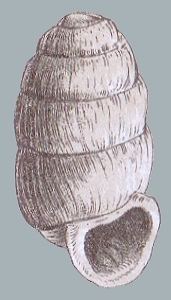Superfamily Pupilloidea Subfamily Vertigininae Rank Species | ||
 | ||
Similar Vertigo, Vallonia tenuilabris, Columella columella, Pupilla loessica, Vertigo genesii | ||
Vertigo parcedentata is a species of minute, air-breathing land snail, terrestrial pulmonate gastropod molluscs or micromollusks in the family Vertiginidae, the whorl snails.
Contents
Distribution
Vertigo parcedentata was first described as a fossil from the loess of Wiesbaden, Germany. The fossil distribution also includes also other parts of Europe, from the Netherlands to Ukraine: Pleistocene and alluvium of the Rhine valley in Germany, Czech Republic, Slovakia, etc. Preece, White & Shchetnikov (2007) had the first Holocene findings from the Baikal region.
Until recently, this species was believed to be extinct. Quite surprisingly, it was found alive in the Dovrefjell, Norway. Meng (2008) found evidence of the occurrence of Vertigo parcedentata in the Altay Mountains and Tien Shan. In 2009 the material was photographed for the first time and compared with fossil material from Central Germany. Pokryszko & Horsák (2007) also found evidence of the recent occurrence of this species in the Altay region.
The Recent distribution of this species includes:
Description
The shell is small, narrowly ovate. The shell has a narrow umbilical crevice and blunt summit. The shell has from 4½ to 5 convex whorls separated by a deeply impressed suture. The last whorl is forming half of the total length. First whorl is entirely smooth, the rest having rather oblique striae, of which there are several finer between two stronger striae.
The aperture is semiovate, obliquely truncate above, with weakly reflected margins which are connected by a very thin callus. The right margin is weakly arched forward. It has usually one or two teeth or is wholly toothless, but it can have up to 4 teeth.
Authorities differ over the dimensions of the shell:
Ecology
Vertigo parcedentata inhabits soligenous and mixed calcareous fens.
